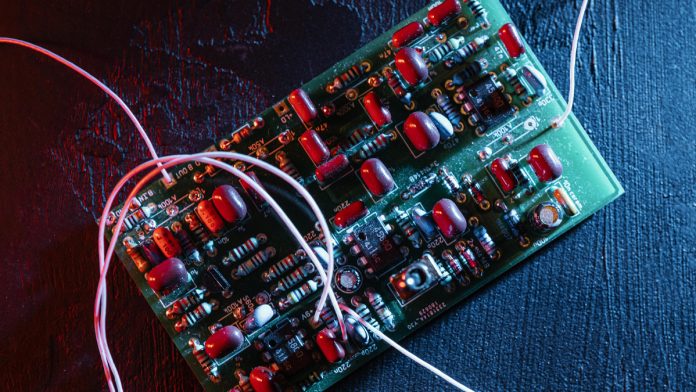Here you will explore the role and impact of inductors in modern film projectors. By examining diverse aspects ranging from material innovations to integration with digital systems, we shed light on how state‐of‐the‐art components improve visual quality and operational reliability. Discover the intricate interplay behind “How Inductor Technology Enhances Film Projector Performance” and why this development is reshaping cinematic experiences.
| Table of Contents | |
|---|---|
| I. | Fundamentals of Inductor Technology in Projection Systems |
| II. | Innovative Inductor Materials and Manufacturing Techniques |
| III. | Electromagnetic Field Dynamics and Inductive Coupling |
| IV. | Thermal Management and Energy Efficiency |
| V. | Circuit Optimization and Advanced Magnetic Modeling |
| VI. | High-Frequency Performance and EMI Mitigation |
| VII. | Integration with Digital Control Systems and Adaptive Tuning |
| VIII. | Miniaturization and its Effects on Projection System Design |
| IX. | Reliability, Durability, and Lifespan Enhancement |
| X. | Future Trends: AI-Enhanced Diagnostics and Smart Inductor Systems |
Fundamentals of Inductor Technology in Projection Systems
Inductors, critical in regulating electric currents, are foundational to reliable film projector performance. They work by storing energy magnetically and smoothing fluctuations in the circuitry. This stabilizes the projection light source and ensures consistent image quality on screen. Embedded into projection systems, “How Inductor Technology Enhances Film Projector Performance” by providing robust energy management and signal integrity, paving the way for improved overall functionality.
Innovative Inductor Materials and Manufacturing Techniques
Advances in materials science have enabled the production of inductors with higher efficiency and reduced losses. Novel alloys and composite materials, together with precision manufacturing techniques, ensure minimal energy waste in projection circuits. This development directly contributes to “How Inductor Technology Enhances Film Projector Performance” by enabling components that are lighter, more compact, and reliable, crucial for the high demands of contemporary cinema systems.
Electromagnetic Field Dynamics and Inductive Coupling
A deep understanding of electromagnetic field dynamics is fundamental for optimizing the performance of projection systems. By refining inductive coupling mechanisms, engineers achieve improved transfer of energy between components, reducing signal distortion. Such precision control directly relates to “How Inductor Technology Enhances Film Projector Performance” by ensuring consistent color reproduction and sharp contrasts, vital for an immersive viewing experience in the cinema.
Thermal Management and Energy Efficiency
Heat management is a significant challenge in film projectors due to the high-powered light sources and circuitry. Advanced inductors are designed to dissipate heat effectively, minimizing thermal buildup and thereby preserving performance. Integrating these sophisticated systems demonstrates “How Inductor Technology Enhances Film Projector Performance” by improving energy efficiency, reducing downtime, and ensuring that thermal stresses do not compromise long-term operational stability.
Circuit Optimization and Advanced Magnetic Modeling
Circuit optimization involves a delicate balance between component values and layout to achieve maximal performance. Advanced magnetic modeling techniques simulate inductor behavior in various conditions to refine circuit designs meticulously. This scientific approach underscores “How Inductor Technology Enhances Film Projector Performance” by enabling designers to predict and counteract performance issues, ultimately contributing to higher fidelity in image projection and reliable film playback.
High-Frequency Performance and EMI Mitigation
Film projectors operate within high-frequency circuits where electromagnetic interference (EMI) can degrade image quality. Cutting-edge inductor designs incorporate features that mitigate EMI and improve high-frequency performance. By efficiently filtering out unwanted noise, these components illustrate “How Inductor Technology Enhances Film Projector Performance” through enhanced clarity and stability in the projection signal, thereby delivering a smoother, uninterrupted cinematic experience.
Integration with Digital Control Systems and Adaptive Tuning
Modern projection systems benefit from seamless integration with digital control networks. Adaptive tuning via digital interfaces allows real-time optimization of inductor performance relative to varying operational conditions. This synchronization showcases “How Inductor Technology Enhances Film Projector Performance” by enabling a high degree of precision and responsiveness. As projection systems shift towards smart technologies, such integration is essential for dynamic adjustments and automated maintenance routines.
Miniaturization and its Effects on Projection System Design
The push for reduced component sizes without sacrificing performance has led to significant breakthroughs in inductor design. Miniaturized inductors now deliver the same, if not higher, performance in a much smaller footprint, allowing projection systems to become more compact and lightweight. This advancement is a prime example of “How Inductor Technology Enhances Film Projector Performance” by facilitating innovative projector designs that are easier to handle, install, and upgrade in modern, agile cinema environments.
Reliability, Durability, and Lifespan Enhancement
Reliability and longevity are critical for film projectors used in high-demand commercial settings. Inductors engineered to withstand prolonged operation and harsh environmental conditions ensure the sustained performance of projection systems. By incorporating robust materials and fault-tolerant design principles, manufacturers reveal “How Inductor Technology Enhances Film Projector Performance” by significantly extending the lifespan of the projector components, reducing maintenance frequency and overall downtime.
Future Trends: AI-Enhanced Diagnostics and Smart Inductor Systems
The incorporation of artificial intelligence promises to revolutionize projector maintenance and performance diagnostics. Smart inductor systems, embedded with sensors and analytic capabilities, can predict failures and optimize performance on the fly. This forward-thinking approach is a compelling demonstration of “How Inductor Technology Enhances Film Projector Performance” by leading to self-monitoring systems that adapt and evolve, setting the stage for the next generation of cinema technology innovations.

